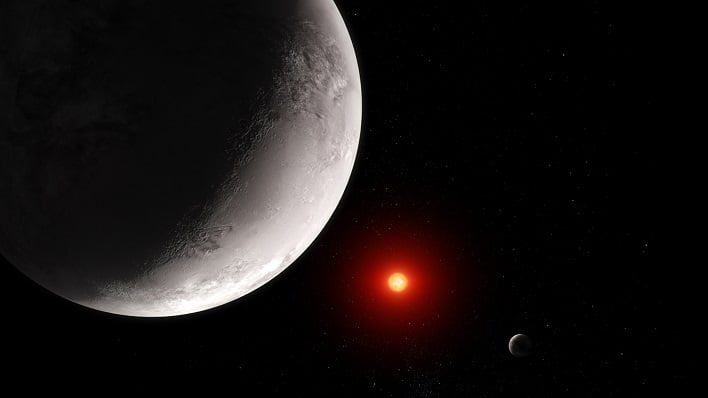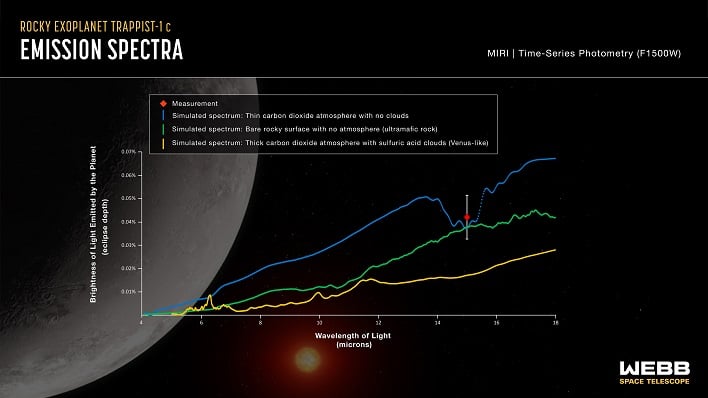Venus Has A Hot Twin And NASA's Webb Telescope Zoomed In For A Close-Up Look

NASA's James Webb Space Telescope has been able to rule out an exoplanet having a thick carbon dioxide atmosphere. Exoplanet TRAPPIST-1 c is described by authors of a recent study on the findings as a Venus twin.
When most think about the Webb telescope, spectacular images of the cosmos come to mind, unveiling space as never before. Beyond just the incredibly detailed images, however, Webb's precision is also being utilized to help characterize rocky exoplanets that are similar in size and temperature to those in our solar system. In the case of TRAPPIST-1 c, the high-powered telescope was able to rule out the exoplanet having a thick atmosphere.
The new findings show TRAPPIST-1 c, which orbits the small red dwarf TRAPPIST-1, is the coolest rocky exoplanet ever characterized based on thermal emission. The results are helping scientists and astronomers determine whether planets that orbit small red dwarfs, the most common type of star in the galaxy, can actually sustain atmospheres necessary for life.

Comparing measured brightness of TRAPPIST-1 c to simulated brightness data for 3 different scenarios
Co-author Laura Kreidberg says the findings are interesting due to TRAPPIST-1 c essentially being a twin of Venus. She says the exoplanet is about the same size and receives a similar amount of radiation from its host star as Venus does from our Sun. She added, "We thought it could have a thick carbon dioxide atmosphere like Venus."
In order to help answer the question of what type of atmosphere exoplanets like TRAPPIST-1 c may have, the team used MIRI (Webb's Mid-Infrared Instrument) to observe the TRAPPIST-1 system on four separate occasions as the planets moved behind their host star. By doing so, the team was able to calculate the amount of mid-infrared light with wavelengths of 15 microns given off by the dayside of the observed planet. It is the same method utilized by other research teams to determine that TRAPPIST-1 b, the innermost planet in the system, is more than likely devoid of any type of atmosphere.
The method allows researchers to determine the amount of mid-infrared light is being emitted by a planet that is directly related to its temperature, which NASA says also influenced by the atmosphere. While the initial measurements do not give a definitive answer about the nature of TRAPPIST-1 c, they do help researchers narrow down the likely possibilities.
"Our results are consistent with the planet being a bare rock with no atmosphere, or the planet having a really thin CO2 atmosphere (thinner than on Earth or even Mars) with no clouds," remarked Zieba. "If the planet had a thick CO2 atmosphere, we would have observed a really shallow secondary eclipse, or none at all. This is because the CO2 would be absorbing all the 15-micron light, so we wouldn't detect any coming from the planet."
Also, while researchers described TRAPPIST-1 c as being a twin of Venus, they do recognize that the data shows that it is unlikely a true Venus analog with a thick CO2 atmosphere and sulfuric acid clouds.
"It is extraordinary that we can measure this," remarked Kriedberg. "There have been questions for decades now about whether rocky planets can keep atmospheres. Webb's ability really brings us into a regime where we can start to compare exoplanet systems to our solar system in a way that we never have before."


